All about tractor cultivators
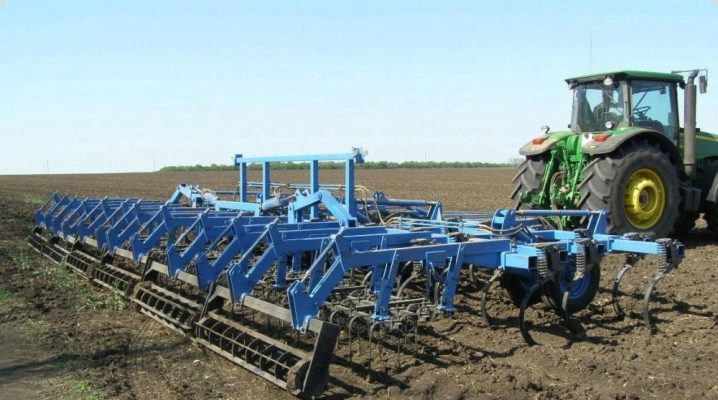
A tractor of any size and power must cope with its main task - plowing the land. Various manufacturers offer compact units for agriculture that allow the use of attachments.
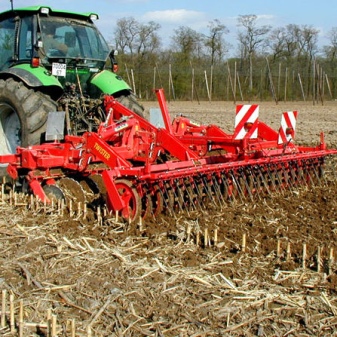
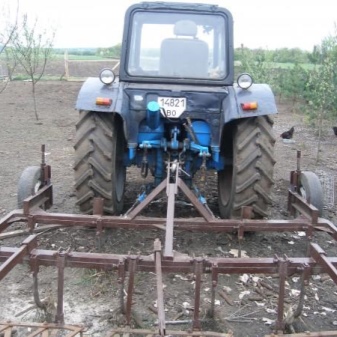
Description
The tractor cultivator will cultivate the land without disturbing the fertile layer. The device will also cope with weeds. The tractor attachment will prevent soil erosion. It is equally in demand both on large-scale cultivated areas and on small household plots. The main advantage of the mini-tractor is its passive control mode.
Due to the simplicity of management, there is a great demand for equipment at the present time. The choice of mini-devices is complicated by the variety of machine performance - the models are capable of performing a variety of functions. The cost of products is closely related to functionality.
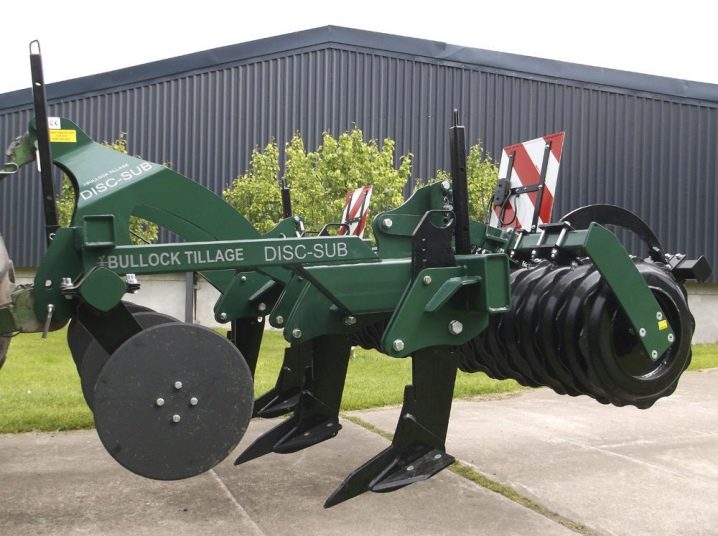
Simple cultivators for the garden consist of a mechanically controlled motor and parts that work the soil. Garden cultivation is possible with an electric or petrol powertrain requiring an operator, whose role can be played by anyone. The dimensions of the area to be treated vary according to the working width of the device from 30 to 80 cm.
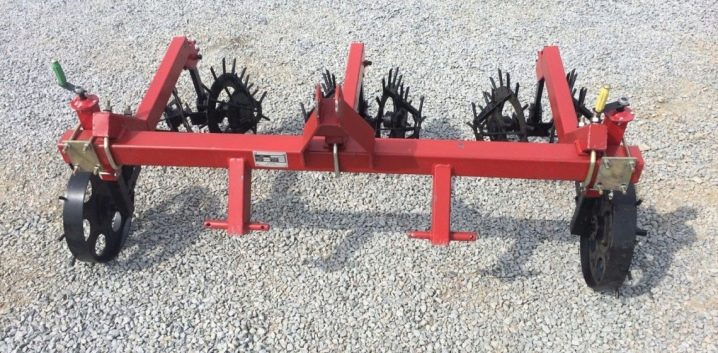
In contrast, conventional classic machines with a trailed cultivator, cultivating strips up to 3 m wide, are equipped with active systems. They are driven by hydraulics. The designs are complemented by driven cutting elements. Conventional trailed cultivators operate on the tractive force of the tractor. They belong to simple structures connected to the device by coupling mechanisms.
In addition to trailed cultivators, hinges are connected to tractor equipment. For them, the base chassis, which is compiled with a thrust, is sufficient. The frame is equipped with elements of various shapes. The working mechanisms of the linkage are driven by the power take-off of the tractor. Support wheels allow you to set the cultivation depth.
Different forms of working mechanisms allow loosening, making furrows, hilling or working with fertilizers. To transport the cultivator to the job site, a hydraulic drive is required, powered by a base chassis system. A tractor with a cultivator is operated by a machine operator, who must acquire the appropriate knowledge and have a permit to work.
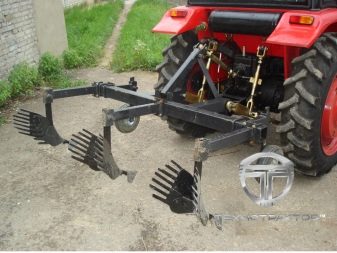
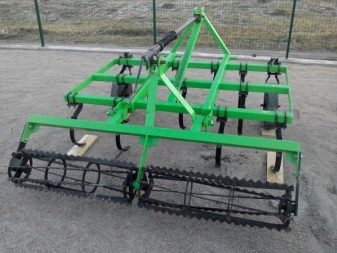
Views
In addition to differences in cultivators in size, there is a difference in species. Farm equipment manufacturers are developing new attachments in mini and regular sizes.
Improved modifications are presented below.
- Disk. It is necessary for breaking up large pieces of earth, ensuring the uniformity of the relief. Due to this, the sown seeds show good germination.
- Ogival. It provides high-quality plowing of virgin lands due to the fact that the curved arrows cut the soil well. In addition to crushing clods, the product copes with unwanted vegetation.
- "Hedgehog" Is a rotary opener characterized by an increased number of thin working parts. The device shows excellent adhesion to heavy soils, copes with weeds and loosening the soil layer.
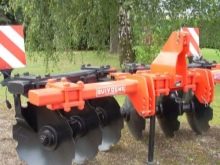
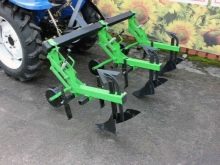
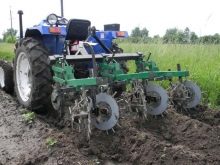
Varieties
- Solid cultivator. It is also called pre-sowing or steam. Treated pairs are sown with seeds next year.The cultivator loosens at high speed thanks to the adjustable depth cultivation.
- Row cultivator it is necessary for the treatment of crops from weeds and for hilling. The working elements are arranged in such a way that they only fall between the rows of plants without damaging them. To protect the plantings, there is an additional attachment. Such an inter-row cultivator for a mini-tractor can be conveniently adjusted to the needs of the gardener.
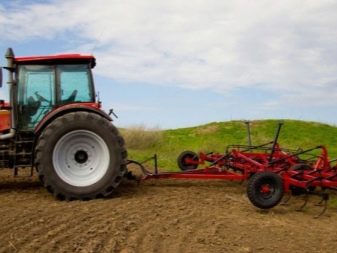
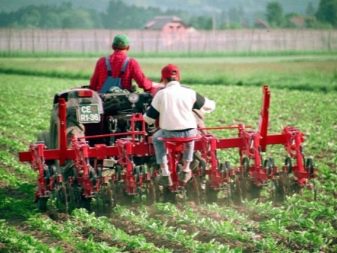
There are also other manufacturers' developments.
A spring cultivator can be used on soils with different characteristics. The product is suitable for slightly stony and water-eroded areas. The cultivator is effective for cultivating the land after harvest. Spring struts are complemented by a reinforced frame, which not only increases labor productivity, but also saves fuel and lubricants. Tilling the soil with a spring cultivator helps to reduce the overheating of the soil in summer, which affects its quality.
The three-furrow cultivator-hiller combines the functions of a row-crop and a continuous unit. The product is suitable for low-power tractors, it is successfully used in the cultivation of potatoes, strawberries, corn and other crops. The device forms beds up to 60 cm high and 62 to 75 cm wide.
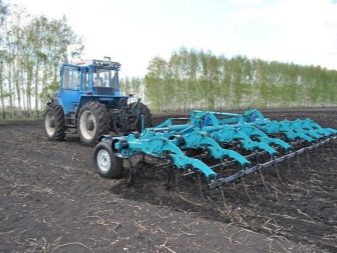
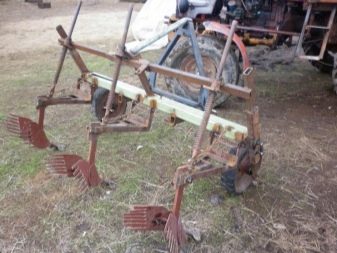
A milling cutter is an attachment for a cultivator that allows you to perform many agricultural operations in one go. Cutters differ in the shape of the knives, as well as in their design. Standard guns are saber-shaped.
The knife is a strip curved at the ends. The four cutting objects are made in the form of a block, which is connected by bolts. The number of units that can be installed on a machine is related to the power and weight of the equipment.
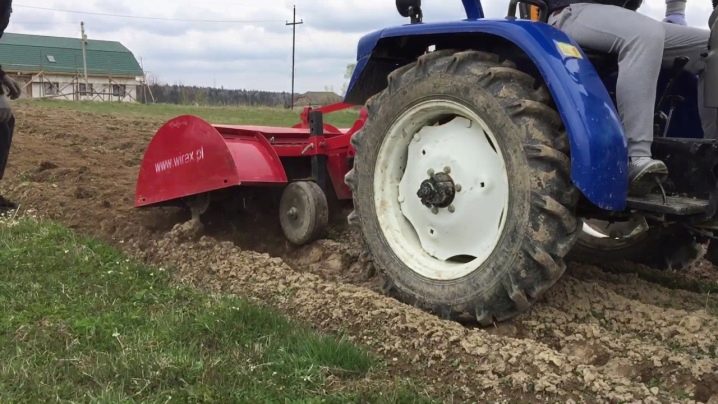
Popular models
T-25 Is a rear wheel drive light tractor with smaller front wheels than the rear. The vehicle is equipped with a two-cylinder, four-stroke air-cooled diesel engine. The reversible manual transmission has the ability to compile with attachments. Thanks to this, cultivators and other devices are hung on the T-25 to facilitate the worker's work.
For hitching to the T-25, the cultivator-hiller with duckfoot or loosening tines is ideal. The device can be supplemented with a weeder suitable for removing weeds. The machine can process row spacings from 62 to 75 cm wide.
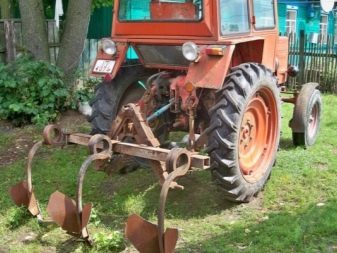
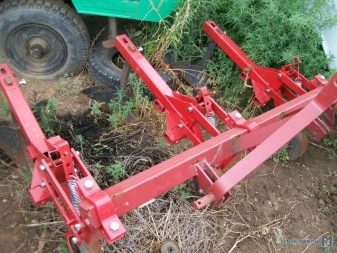
In addition to the hiller, the T-25 can be equipped with a continuous and presowing cultivator for soil cultivation, which will provide simultaneous harrowing. The KON-1.4 product is equipped with tooth (spring) harrows, which provide high-quality loosening to the selected depth while simultaneously getting rid of weeds.
The attachment is compiled with a hydraulic frame, which allows the transport width to be reduced to four meters - this eliminates the need for additional equipment to transport the coupler from several cultivators.
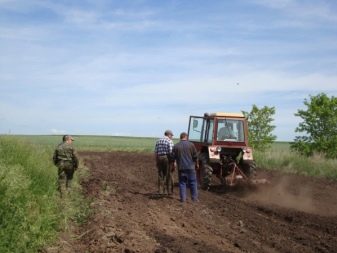
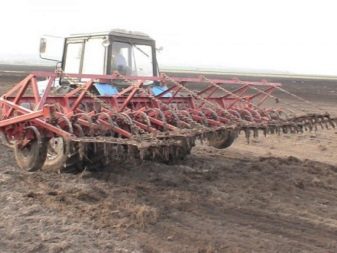
Other popular cultivator models:
- KPS-4 - steam;
- КРН-5,6 - inter-row;
- KPM-8 - pre-sowing;
- KRG-3,6 - hydraulic.
The devices are designed to handle areas from 4 to 10 hectares.

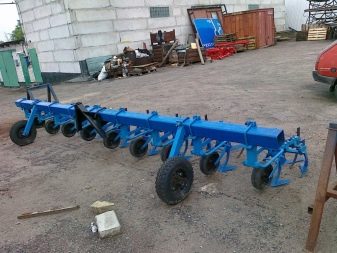
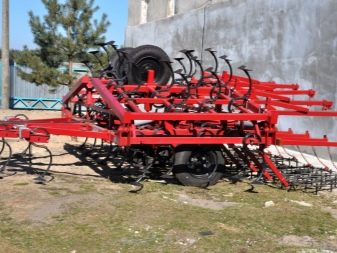
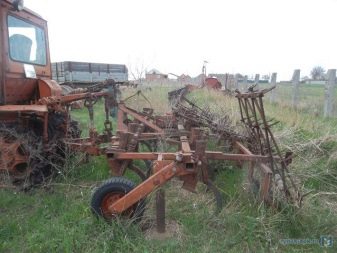
T-40 - a wheeled tractor that rolled off the assembly line of the Lipetsk plant in 1961. Reliability and improved characteristics of the product made it a bestseller in the Soviet engineering industry.
A rotary cultivator or a rotary tiller will work successfully in conjunction with the T-40. The unit is used to cultivate virgin lands. The T-40 with a rotary cultivator copes with corn fields. This culture is considered a good green manure. The rotary cultivator will not only efficiently crumble plant residues, but also guarantee their mixing with the soil.
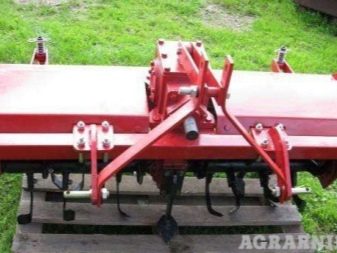
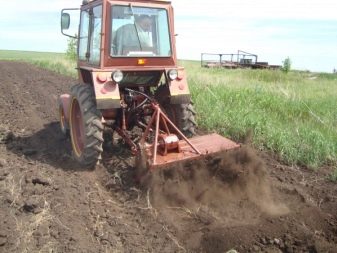
The working mechanisms of the rotary tiller are plate-type knives that are mounted on rotating shafts.Thanks to the device, the soil is well loosened - as a result, a biological and biochemical improvement of the structure is obtained. The unit is perfect for the development of fields overgrown with weeds, unsuitable for other machines.
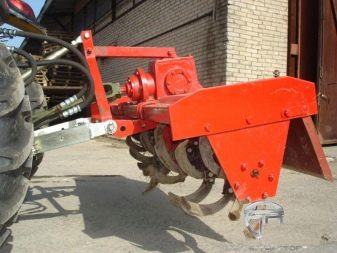
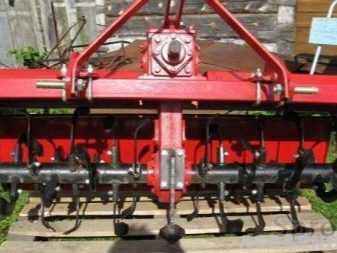
Choice
The main difference between cultivators lies in the working mechanisms, which are flat-cutting, universal or loosening.
Plane-cutting elements are one-sided and lancet. The latter option is often referred to by professionals as a universal type. If the paws of the cultivator are one-sided, flat-cutting, then they, like razors, destroy even tall weeds. If the elements are lancet, in addition to removing weeds, they are also suitable for shallow loosening of the soil.
The versatile lancet elements do a good job of killing weeds and loosening the soil to a depth of 15 cm. During cultivation, such a cultivator will turn the wet layers to the surface.
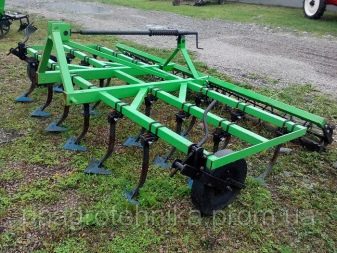
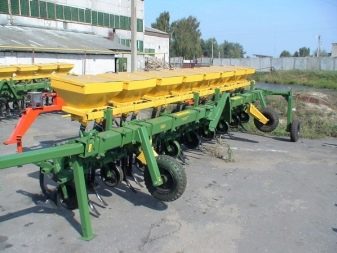
Ridging cultivators are of the chisel type and allow you to cut furrows. The same tool can have reversible arms or needle discs. Such elements are also called plowshares or feeding knives. Ridging cultivators are needed for cutting ridges up to 25 cm high.
Furrow cutters are distinguished by the presence of funnels through which fertilizers are introduced into the ground. The resulting furrows are also used for irrigation. To break up the soil crust formed by the water, cultivators with needle discs are used. The needles can loosen the soil to a depth of 4 cm, touching only the surface layer, without causing harm to plants. The diameter of the discs varies from 35 to 52 cm.
If you need to loosen between planting rows or apply fertilizer to the soil, choose a cultivator with feeding knives. It leaves furrows that are up to 16 cm deep. To close them, an additional loosening or weeding share is installed.

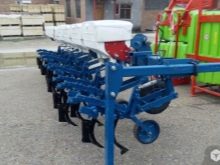
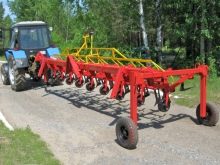
Operating tips
Preparing the cultivator for operation should begin with studying the user's manual. Special attention should be paid to security measures. According to the rules, only a technically sound cultivator can be operated. In the document that is attached to the device, there is a schematic image - according to it, you need to assemble parts and mechanisms into a single whole.
Usually the working mechanisms are installed on the frame. Then the levers are fixed in the clips. They are threaded through brackets with a retainer and a spring cotter pin.
The hitch sections are connected using parts called “pins” or bolts. Several of these elements are located on the same beam with brackets that are attached to the levers. In the diagram, each detail is shown in numbers. In the description, numerical designations are also present.
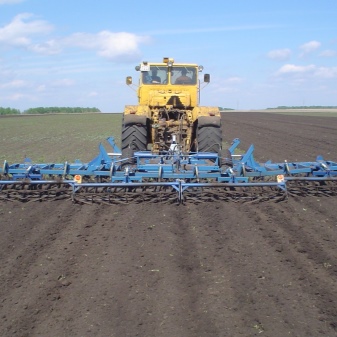
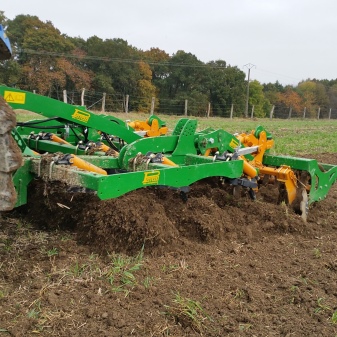
You can plow the garden only after carefully checking the fasteners of the entire assembly. If there are loose connections, then they must be tightened. Then the cultivator is attached to the tractor. This work can also be done according to the drawing.
The axle of the cultivator frame clings to the lower links of the tractor. For this, the machine is adjusted in reverse to the cultivator. The axle clings to the special catchers of the attachment. There are locks with “pins” and cotter pins for fixing the hinge plate.
The reliability of the connection is checked by lifting and lowering the part twice using the tractor hydraulics. Then you need to equalize the depth of soil cultivation. For this, the working mechanisms of the cultivator are lowered to the surface. After that, it is necessary to install the clips into the holes of the clips. Each pair of paws increases the depth by 0.5 cm.
Variations in assemblies are usually due to moisture or surface hardness. The final adjustment of the tillage depth is possible after a test drive in the field.
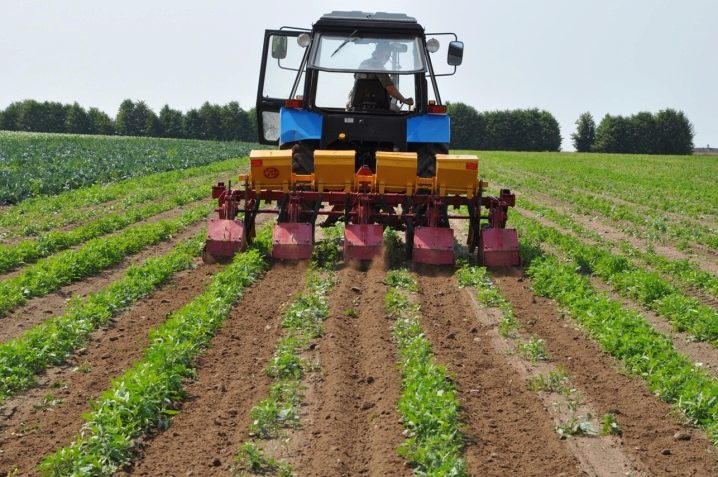
To learn how to make a cultivator for a tractor with your own hands, see the video below.

































































The comment was sent successfully.